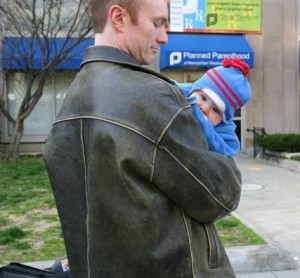In the secular world a mystery is something which baffles or eludes understanding, something which lies hidden or undisclosed. Now the usual attitude of the world toward mystery is to resolve it, get to the bottom of or uncover it. Mysteries must be overcome! The riddle or “who-done-it” must be solved.
In the religious world mystery is something a bit different. Here mystery refers to something revealed by God which largely or completely escapes what we can know by our intellect alone and unaided by God through grace and revelation. These are not worldly mysteries but mysteries of the faith. From the perspective of faith it is also usually that case that a mystery is something partially revealed by God but much more of which lies hidden. So something is seen, but much more is unseen.
For the Christian then, mysteries are not something to solved or overcome so much as to appreciate and reverence. In worldly mystery it is something to approach and with daring, perseverance and smarts to conquer. But the mysteries of faith are something to be considered with humility and reverence realizing we can never exhaust their meaning or capture and conquer their full essence. A few thought on the mysteries of faith:
- Consider the picture at the upper right of the iceberg and allow it to be an image for the mysteries of faith. Above the water line we see something of the iceberg, but beneath the waterline, remains much more, hid from our eyes (except in a picture like this).
- Consider the mystery of creation. In the book of Sirach, after a long list of the marvels of creation there comes this magnificent line: Beyond these, many things lie hid; only a few of God’s works have we seen. (Sirach 43:34) This is mystery, what we see is far surpassed by what we do not see!
- Consider the mystery of the human person. Think of someone you know rather well, perhaps a spouse, family member or close friend. There is much about them that you see and know, but even more of which lies hid. You can see their body, but only the external parts of it. Much more lies active and intricate beneath the skin. You “see” aspects of who they are in terms of their personality and mannerisms and so forth but much more lies hid from your knowledge such as their inner thoughts, aspects of their history, and deeper drives and motivations that may lie hidden even to them in many ways. As time goes on and relationships deepen the “mystery” of the human person unfolds and more is revealed. Yet the mystery of the human person is never “solved” and it would be irreverent to assume we ever could or should do so. No, this mystery must be reverenced and approached with humility and if we ever really think we have some one (even our selves) “figured out” we are badly mistaken and transgress the dignity of the person. Scripture says, More tortuous than all else is the human heart, beyond remedy; who can understand it? I, the LORD, alone probe the mind and test the heart (Jer 17:9-10). Surely we are on a journey to understand and the discover as the mystery of our selves and the others as our life unfolds but the mystery must always be respected and reverenced, not solved in order to be controlled and manipulated.
- Herein lies a problem with modern American culture that should be critiqued and that is the tendency to lack modesty. One definition of modesty is “reverence for mystery.” Part of the dignity of the human person is not simply to be on open display in an indiscreet way. In deeper relationships more is revealed in increasingly appropriate ways. Close friends share more and understand more. Spouses, ideally, share even more to include the deep intimacy of the body. The disclosing of the mystery of the human person in appropriate ways based on the depth of relationship is at the heart of modesty. But today too many things of a private nature are too easily sought and disclosed. A nosey media is partially to blame along with an increasingly odd tendency for many today to want to disclose matters that should remain private. Talk shows come to mind wherein a person or celebrity “tells all.” In today’s physcotherapeutic culture there is also the tendency to request and also to provide too much information about personal things. Surely close friends and family may be an appropriate audience for such disclosures but immodesty causes many to reveal indiscreetly what should remain private. Clearly too, physical immodesty is epidemic and we have discussed it here before. And this also fails to reverence the mystery due the human person by putting on display that would should only be revealed in the most intimate and appropriate settings. Mystery is at the heart of the dignity of the human person. Modesty is reverence for that mystery, immodesty is a lack of reverence (cf 1 Cor 12:22ff).
- Consider the mystery of the Liturgy and the Sacraments– We see much in the Liturgy and the celebration of the Sacraments but far more remains hidden from our eyes as these mysteries are celebrated. (You may well know that the Eastern Churches and especially the Orthodox Churches refer to the sacraments as the “Mysteries”). Consider a baby being baptized. We see the water poured and hear the words. Perhaps there is a cry. But what remains unseen is even greater: The child dies, is buried with Christ and rises to new life with him in an instant (Rom 6:1-4). Sin is washed away, an inheritance is received, true membership into the Body of Christ is conferred, the office of Priest Prophet and King are received, divine sonship is conferred and on and on. Far more is actually happening that we see or even know. This is mystery, something seen, yet far, far more unseen. Consider the Liturgy, the altar is there, a priest, the faithful gathered, words and gestures perceived. But far more is unseen: Christ the high priest is the true minister, the physical church building gives way to the truth that we are mysteriously caught up into heaven and the heavenly liturgy surrounded by countless saints and angels worshipping the Father and we as members of the Body of Christ render the Father perfect praise and thanks through, with and in Jesus our head.
- Herein lies a problem with the Liturgy in modern times– In recent decades there has been a laudable attempt to make the Liturgy more intelligible to people. However there is a trade off to be careful of. The mystery of the Liturgy and the sacraments must be reverenced. In our attempt to make everything intelligible and accessible we risk offending the dignity of the liturgy and sacraments which are ultimately NOT fully intelligible or explainable. They are mysterious (in the way we are using the word) and ineffable (not reducible fully to words). In the ancient Church the Liturgy was surrounded by the disciplina arcanis (discipline of the secret) wherein only fully initiated Catholic Christians were permitted to witness it. Sacramental catechesis was carried on largely AFTER the celebration of the Sacraments (Mysteries) in a process called mystagogia (a Greek word meaning “Education in the mysteries”). I do not argue here for a complete return to those days but one of the characteristics of the modern age and the manner in which liturgy is often celebrated is the lack in a sense of mystery. It often seems that everything has to be “seen” and “understood” to be authentic or relevant, or so the thinking goes with some. But this is wrong on two levels. First, everything CANNOT be seen. Most of the liturgy in fact lies hid from our earthly eyes. Secondly most of the liturgy cannot be understood. It is mystery to be reverenced and appreciated as such. It is “other” and beyond what this world can ever fully appreciate. We can grow in our appreciation of it as the years go by but never solve or understand it fully here on this side of the veil. Somehow this appreciation of the mystery of the Liturgy and Sacraments must be balanced with the attempt to render our worship “intelligible.” I put intelligible in quotes for we can only use that term in a relative manner.
- Finally it remains true that our longing to enter fully the mystery of God and our very selves will one day be fulfilled. St. Paul speaks of this when he writes: Now we see but a poor reflection as in a mirror; then we shall see face to face. Now I know in part; then I shall know fully, even as I am fully known ( 1 Cor 13:12). You may be aware that the Greek word (title) for the last book of the Bible is Ἀποκάλυψις (Apocalupsis) which means “unveiling.” One day, the great mystery of this world, of ourselves, and God’s plan will be fully unveiled. For now, we reverence these mysteries of our self, others, the liturgy, the sacraments, creation itself and God’s plan. One day they shall be revealed. A caution here. I do not think we will ever exhaust the mystery of God (and perhaps not even ourselves). I do not think all eternity will ever be enough to exhaust the full mystery of God who is infinite and can never be fully comprehended in essence by his finite creatures.
Reverence mystery, relish mystery, respect mystery. Magnum mysterium, admirabile sacramentum!


